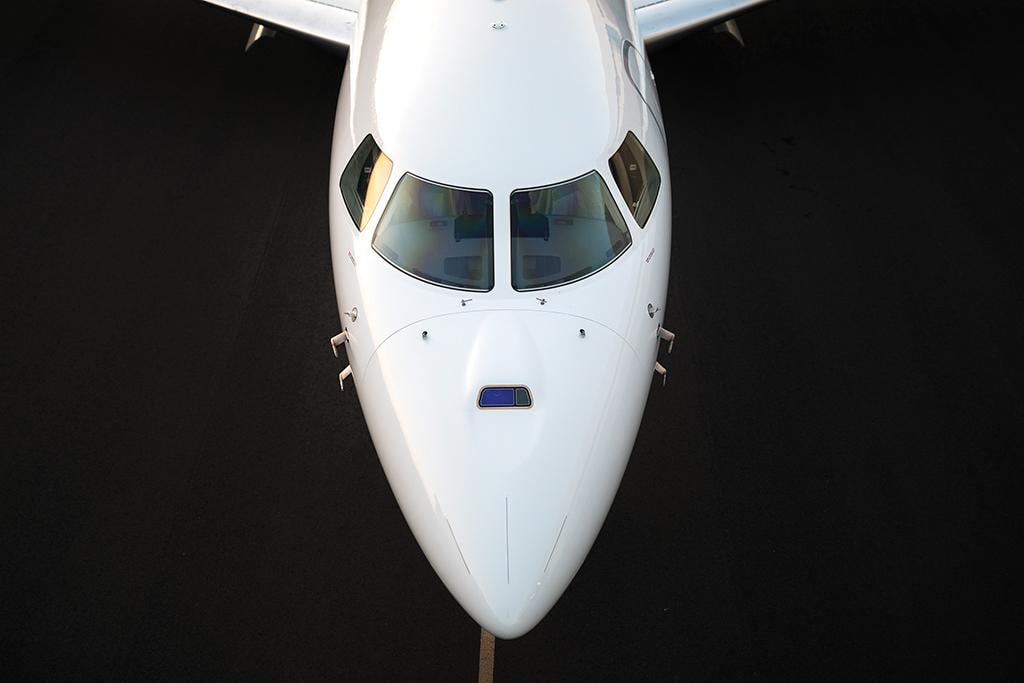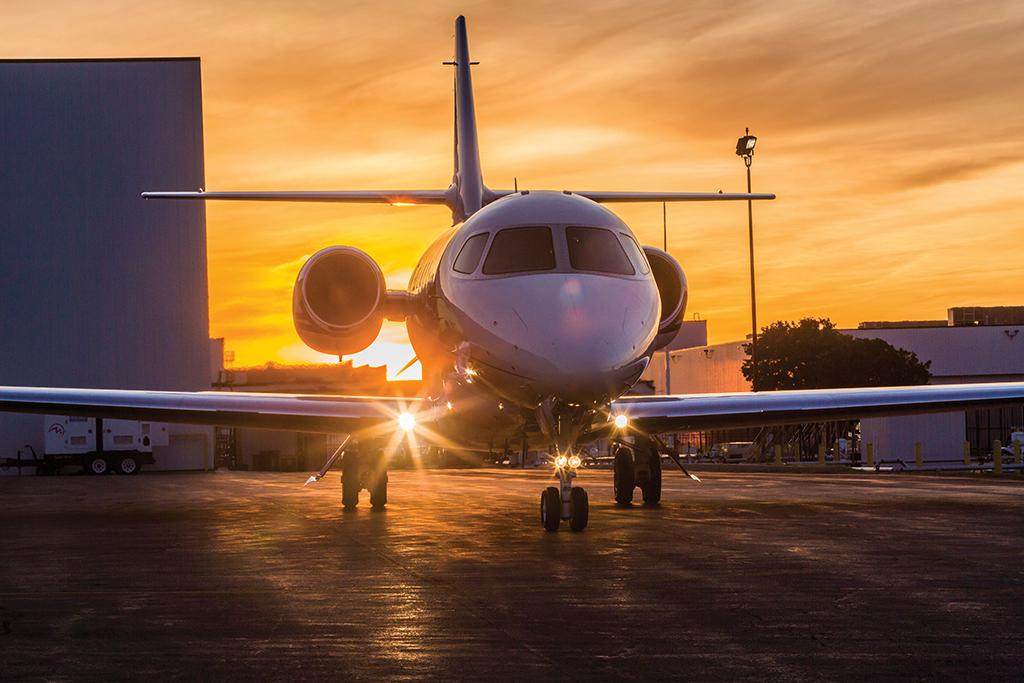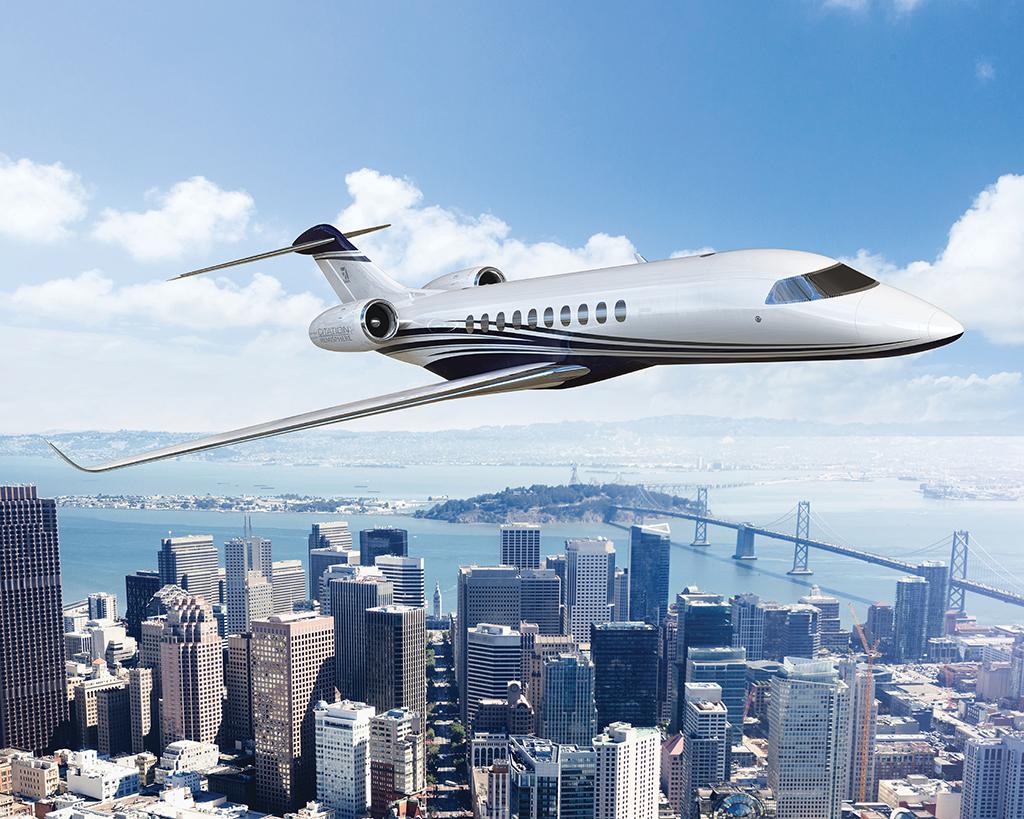
The first half of 2020 was an economic catastrophe for the business aviation sector, for air transport in general and for most of the world economies as well. April 2020 business jet flights declined more than 75% year over year. FBO fuel sales were off as much as 95%. Deliveries of some new general aviation aircraft were cut in half, pilots were furloughed, MRO staff was cut. Manufacturers’ supply chains have been disrupted and some firms may not survive. Some facilities at general aviation airports were shuttered with no hope of reopening. The FAA is reducing operating hours at 100 control towers, mostly at smaller airports.
Recovery from the COVID-19 pandemic indeed could be more difficult than pulling out of the 2008 Great Recession because of the depth and breadth of the economic damage throughout the economy. Business aviation “got sucker punched,” was the view of Michael Bruno, Aviation Week & Space Technology’s senior business editor, during “Business Aviation, Post-Pandemic: Will This Crisis Reshape the Industry?” part of a COVID-19 webinar series hosted by the Aviation Week Network, of which BCA is a member.
Gulfstream’s customers deferred deliveries of 11 aircraft in the first quarter and the firm announced the layoffs of 700 employees in early May. In late April, Superior Air Charter, parent company of JetSuite, filed for bankruptcy. And NetJets announced a 25% cut in staff at two business units and deferral of some new aircraft deliveries.

Adding to the pain is the “complete collapse of oil prices,” according to Richard Aboulafia, Teal Group’s vice president of analysis, during the webinar. “In 2008, the top end of the market did fine, but the bottom end got crunched and never fully recovered. Small general aviation companies never got back to the frothiness they saw back in 2007 and 2008.
“So much of the top end of the market is linked to resource rich economies, their companies and high-net-worth individuals. There’s no way [this time] the top end doesn’t take an extremely serious hit,” says Aboulafia.
“Pain will be felt across all sectors, 40% in light jet, 30% in midsize and 30% in large cabin,” says Rolland Vincent, head of the Plano, Texas, consultancy bearing his name. Aboulafia believes that “safe havens” are the first things business aircraft makers will seek in order to survive. “And the only thing I can see that even vaguely resembles a safe haven in this crazy world is defense spending.”
General Dynamics, the parent company of Gulfstream Aerospace, is the U.S.’ fifth-largest defense contractor, earning more than half its revenue in that sector. Long-term, that bodes well for Gulfstream as it proceeds amain with development of its 7,500-nm-range, four-section-cabin G700, as well as future projects, such as the P-32 joint venture with Israel Aerospace Industries (IAI) described below.
Dassault can fall back on sales of its Mach 2-class Rafale fighter and refurbished Atlantique 2 patrol aircraft. That will allow the French firm to push forward with both the Falcon 6X and upcoming Falcon 9X ultra-long-range executive jet.

But Bombardier has no such defense sector backstop to shore up its finances as it rides out the storm and attempts to service $9.3 billion in debt. “That puts [Bombardier] in a fairly vulnerable place. So, I think it faces a unique set of challenges,” says Aboulafia. Embraer, in spite of its defense business, also is in financial peril after the collapse of its $4.2 billion joint venture with Boeing.
“Ironically enough, if you could somehow find a way to put ownership issues, ego issues, whatever else aside, it’s hard to imagine a better combination than Embraer and Bombardier. That would actually go pretty well as retrenchment in this business,” says Aboulafia.
“Not in my lifetime, no way,” counters Vincent. He believes there are too many cultural differences between the two firms. There is also bad blood over old government subsidy feuds. But there are undeniable synergies, if such an agreement could be reached. Embraer’s Phenom 300 has been the best-selling light jet for more than a decade, while Bombardier Learjet 75 sales have flagged. The Embraer Legacy 500 never has sold well and the Bombardier Challenger 350 continues to dominate the super-midsize class. Bombardier’s Global 5500, 6500 and 7500 models are well positioned against large-cabin competitors, leaving only the long-in-the-tooth Challenger 650 in need of faster cruising, higher flying, longer range replacement.
Textron, in contrast, may rekindle merger talks with Bombardier, now that Alstom’s proposed $6.7 billion acquisition of Bombardier’s rail business is on hold. Meanwhile, Mitsubishi’s $550 million offer to buy the Bombardier CRJ line seems to be proceeding. Regardless, there’s pressure on cash-strapped Bombardier to unload its debt burden, adding urgency to a possible sale. Vincent notes that a sale of Bombardier Business Aircraft to a third party likely would leave the founding Boudoin family with a hefty portion of shares in any third-party acquisition as part of the deal.
“There are opportunities here. It’s just that, as we all know, the history of business jet consolidation is largely unblemished by success,” says Aboulafia. In summary, he quips, “We’re all reminded of Warren Buffett: ‘When the tide goes out, you see who’s swimming naked.’”

Bruno notes that Textron doesn’t have “mounds of cash” for research and development. The firm also may be too cash-strapped to pursue acquisitions, considering that its 1Q20 revenues declined 10.7% from 2019 mainly because of the impact of COVID-19. Notably, Textron Aviation’s 1Q20 revenues also were down 23% year over year. Vincent believes it would be more likely that a private equity firm, such as Bain Capital or Carlysle, would make a bid for Bombardier sooner than another business aircraft manufacturer.
More importantly, Vincent says consolidation of overlapping models will happen before companies consider mergers. Prime examples include Bombardier’s Global 5000 and 5500, and Global 6000 and 6500, along with the Embraer Legacy 450 and Praetor 500, and Legacy 500 and Praetor 600, plus Textron Aviation’s Sovereign and Longitude. Newer designs offering more range, more payload or more spacious cabins will survive. Market demand for older models will wane, leading to end of production.
Uncertainty dominates the market. “. . . [F]rankly we don’t know the magnitude of this recession. We don’t know how long equities markets will keep falling, or indeed, if they will keep falling. Maybe there’ll be some stability. We don’t know about the length and depth of the recession that’s coming,” says Aboulafia.
Vincent says that customer sentiment, their intentions to purchase are the lowest he’s seen in nine years. “It’ll be a very strange market for the next few months.”
The beginnings of a business aviation turnaround will be shown by an uptick in aircraft utilization and a firming of prices in the pre-owned market. Aboulafia says a recovery in crude oil markets and recoveries in the equities markets will be key, coupled with a surge in business earnings. “The corporate profit index comes back and business jets come back.”
Vincent says GDP growth, bulls running in stock markets and more favorable U.S. dollar to foreign currency exchange rates, along with higher oil prices, will be the main drivers. He disagrees with Aboulafia’s prediction that higher corporate earnings will drive business aircraft purchases, pointing out that companies have not chosen to buy aircraft with profits that have surged since 2008. They’ve made considerably larger capital expenditures for other equipment. And the trend is unlikely to change as the world’s economies begin to recover.
Business aviation should recover before the airline industry because it’s much less dependent on discretionary travel. Face-to-face deal-making is one of the benefits of business aviation. You can’t Skype or Zoom your way through business negotiations. You have to be on site to inspect a plant, talk with employees, see processes in progress, examine products, hear what customers, financiers and suppliers have to say.
“It’s a competitive world. If I have a slight advantage of unseating a competitor, whether I’m trying to buy a company or consulting. It’s a competitive world and travel helps you. Nobody competes on safety. But it’s kind of implicit before people feel comfortable getting back in airports and airlines, they’re going to feel better about private aviation,” says Aboulafia.
This is particularly true for international air travel. Private aviation won’t leave you stranded a long, long way from home because of an Icelandic volcano eruption, second wave of virus, travel bans or other roadblocks to commercial air travel.
And while private and public aviation sectors have been loath to point fingers at each other concerning safety, there’s a strong undercurrent of discussion about business aviation being the preferred mode of air travel in the new non-normal era of COVID-19.
Bruno says coronavirus has been added to the risk-management matrix and “executives don’t want to risk exposure on commercial flights.” Companies operating business aircraft have door-to-door control over the risk of exposure to disease, including assurance about the sanitation of ground support facilities, vehicles and aircraft, plus screening personnel, pilots and passengers for signs of infection. They’ll know a person on board is coughing due to a seasonal allergy, not the onset of COVID-19. One industry observer says companies are seeking to create a “health corridor” that will provide travel with near virus-free-exposure from origin to destination. Vincent believes load factors aboard corporate aircraft may increase as CEOs strive to keep more key employees off the airlines.
Companies may view their aircraft as essential business tools, but they’re also keenly aware of the vilification of business aviation by Washington politicos and the media during the 2008 economic meltdown.
Aboulafia says operators will have to manage the “optics” carefully to avoid a repeat of the “One Percenter” class warfare that dominated the news a decade ago, especially regarding use of private aircraft. “Otherwise, there’s going to be a certain degree of tension over the optics of that,” says Aboulafia.
Carbon impact is another part of managing “optics.” Europe is taking aim at business aviation because carbon emissions per passenger are considerably higher for an eight-passenger business jet than for a 400-passenger jumbo twin. Environmentalists note that the skies have been noticeably cleaner and quieter since the COVID-19 pandemic virtually shut down air travel. Even before that, “flight shaming” became common practice in some parts of Europe. Business aircraft are an especially easy target for eco activists.
As shown on the accompanying chart, though, all of aviation in the U.S. accounts for a scant 2.6% of greenhouse gas emissions, according to the Environmental Protection Agency. U.S. business aviation comprises 2% of aviation emissions or 0.052% of the total U.S. carbon footprint, according to the General Aviation Manufacturers Association (GAMA) and the International Business Aviation Council (IBAC). In contrast, more than 60% of human-generated greenhouse gases in the U.S. are emitted by power plants, factories and light cars and trucks.
Nonetheless, the business aviation community has been quite proactive in pushing for development and use of sustainable aviation fuels (SAFs), which are refined from plant-based feedstocks that absorb carbon dioxide during their growth cycles. GAMA and IBAC predict that more fuel-efficient business aircraft, coupled with widespread use of SAF, will eventually reduce business aircraft carbon emissions to 50% of what they were in 2005.
“It’s a matter of when, not if, to curb aviation carbon emissions. The idea of carbon offsetting is widely shared across both political parties,” says Bruno.
Long term, the outlook for private aviation is bright, especially with people being increasingly concerned about the risks of exposure to disease associated with traveling on commercial airlines. “Taking the long view, yes, we’ll get back on that growth trajectory. We’re still a really solid business that employs a lot of people. There’s a lot of money to be made by a lot of different types of companies,” says Aboulafia.
Short term, however, “we’re going to have a really difficult couple or three years” because of the fallout of COVID-19. One broker tells BCA that he recently had four transactions blow up because buyers were so concerned about the economy.
Bruno counters, “Billionaires and multi-billionaires don’t let little things like economic recessions stop them. They continue to march forward in all of their deal making and all of their business activity.” Ultra-high-net-worth individuals “are the stalwarts of this market,” says Aboulafia. “And one of the things we know about them is they like to get there faster,” adds Bruno.
This may bode well for the future of the Aerion and Boom supersonic aircraft projects, assuming the regulatory, technical and environmental hurdles can be overcome.
While the business aviation community awaits such quantum leaps in cruise performance and price tags, this year’s Purchase Planning Handbook provides performance numbers, size measurements and operational specifications for an impressive array of more conventional aircraft. They range from four-seat singles that can hop between tiny towns in Texas up to 12-passenger uber jets that can fly from Teterboro to Taipei.
The COVID-19 pandemic is creating acute downward price pressure in some sectors. Manufacture of some models has ceased. For instance, we no longer list Mooney Ovation and Acclaim single-engine aircraft. The Embraer Legacy 650E, the business jet variant of its ERJ 135 regional jet, and the Bombardier Learjet 70 are gone from the Handbook. Production lines for the Nextant G90XT and 400XTi, Piaggio Avanti Evo and Syberjet SJ30i may not be dead, but they’re in persistent vegetative states. Most manufacturers have nudged up asking prices ever so slightly. Bombardier and Dassault held over 2019 prices for 2020, as did Embraer for its super-midsize models. Textron even trimmed a little from Caravan and Grand Caravan EX prices.
Textron, however, hiked the retail price of the Citation Longitude by nearly $1.4 million, making it the most-expensive super-midsize jet and only $1.6 million less than the large-cabin Dassault Falcon 2000S. The Longitude was also the last aircraft to enter the fiercely competitive segment dominated by the Bombardier Challenger 350, the Embraer Praetors and the Gulfstream G280.
In December 2018, IAI and Gulfstream started planning for a successor to the G280, each agreeing to invest $80 million in the new aircraft, code-named P-32, according to Globes, Israel, business news. If the project comes to fruition, it will make the super-midsize segment even more competitive.
Textron also raised the price of the CJ4 by $450,000, upped the list of the Latitude by $700,000 and ballooned the price of the Sovereign+ by $1 million.
Pilatus, benefiting from unsurpassed customer loyalty and strong market demand, raised the price of the PC-12 by more than $350,000, bringing it to within $1 million of the Beech King Air 250. Pilatus continues to own the passenger/freight combi niche of the pressurized single-engine turboprop market because of protracted delays in development of Textron’s Denali utility turboprop.
The Pilatus PC-24’s price has gone up 10%, to more than $11 million as demand builds for the Swiss manufacturer’s first twin-turbofan light utility aircraft. Arguably, though, the PC-24 is a midsize jet because of its cabin cross-section. It’s the only midsize aircraft with a cargo door and capable of operating from unimproved runways.
This year, Bombardier’s Global 5500 and 6500 make their debuts in the Handbook. They’re considerably more capable than the Global 5000 and 6000, plus they’re aggressively priced to make them competitive with the Gulfstream G500 and G600. Meanwhile, the Bombardier Global 7500 now has direct competition as the Gulfstream G700 makes its first appearance in the Handbook.
We’ve retained the Airbus ACJ and Boeing BBJ jetliner derivatives as business aircraft because of their appeal to head-of-state and government special-mission organizations. A few of these large aircraft still are purchased by ultra-high-net-worth individuals, but their appeal to corporate operators seems to have all but dried up.
With the bears clearly beating the bulls so far this year, 2020 should be a bonanza for buyers across a wide range of models. Many aircraft manufacturers are itching for new business, in spite of their raising asking prices. They’ll be willing to take a fine pencil to sales contracts to ink deals and keep production lines open — at least for the near future.
While demand for business aircraft likely will be lackluster until 2022, or later, the intrinsic value of these business tools is becoming even clearer in the new non-normal era of disease pandemics. Demand will rebound, slowly at first, but steadily with time. As the market recovers, prices will get firmer and bargains will be fewer. This year should be the best year for buyers in more than a decade.






Comments